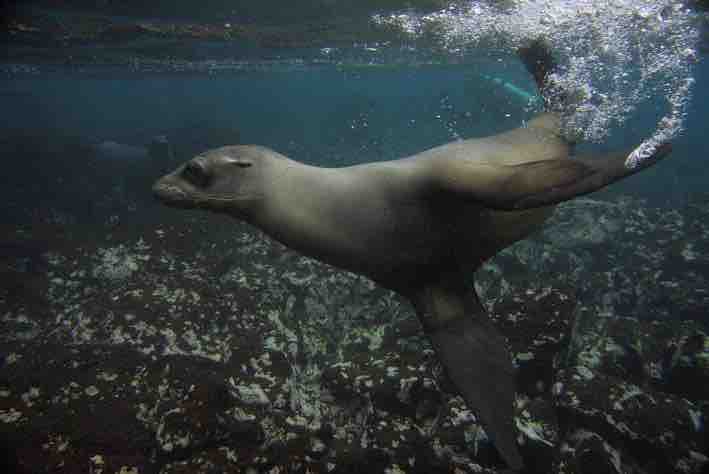Juvenile Galapagos sea lion (Zalophus wollebaeki) swimming in shallow waters in Champion Islet. Photo by Andrés Moreira-Mendieta.
Abstract
Pinnipeds endemic to the Galapagos archipelago are in endangered conservation status. The Galapagos sea lion, Zalophus wollebaeki, and Galapagos fur seal, Arctocephalus galapagoensis, have adapted to an ecosystem with high environmental variability and unpredictable marine productivity to survive. In addition to the environmental factors that pressure their populations, these species are exposed to anthropogenic influence, mainly in rookeries on islands with human settlements. It has been determined that the populations of Galapagos pinnipeds have different growth trends between regions of the archipelago, islands of the same region, and between rookeries of the same island. 58% of the Galapagos sea lion population is in the southeastern, with the largest rookery in direct contact with the inhabitants. Various strategies have been proposed to reduce the negative impacts of human–animal interaction, ensure the population’s viability over time, and reduce the species’ extinction risk.
Read the article in the link: www.intechopen.com/chapters/88586






